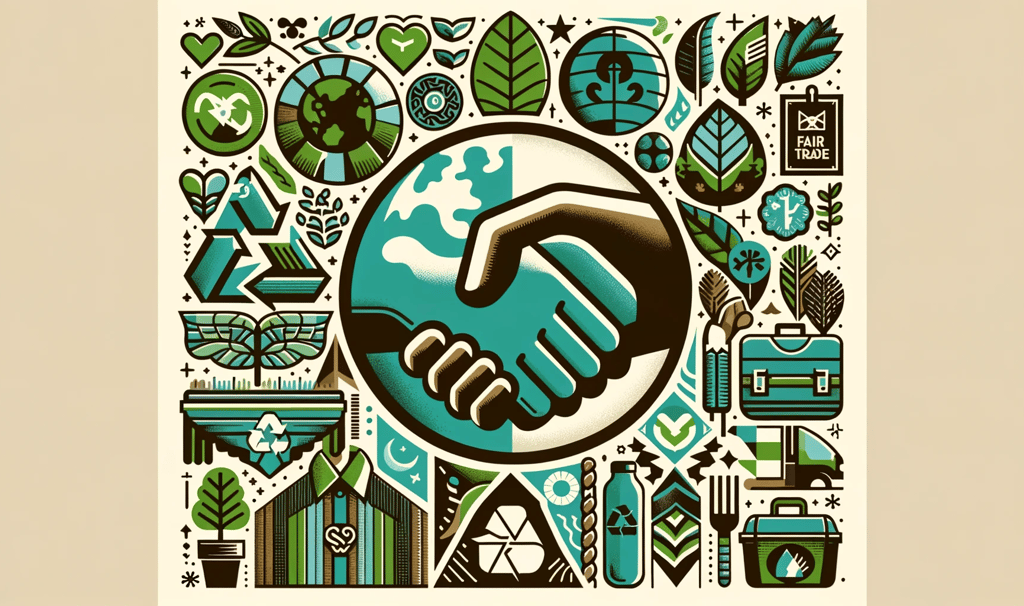Marketing Environment Through the Lens of Patagonia
A case study of Patagonia's marketing strategy. Learn how they analyze the micro (4 Cs) and macro (PESTLE) environment to build a brand on ethics and sustainability.
MARKETING
The Procure 4 Marketing Team
9/26/20233 min read


Quick Answer: What is Patagonia's marketing strategy?
Patagonia's marketing strategy is a masterclass in ethical and environmental analysis. The company's success is built on a deep understanding of its microenvironment (like its activist Customers and sustainable Suppliers) and its macroenvironment (like the Social trend towards sustainability and the Political landscape of environmental policy). By building its entire brand on a core mission of activism and transparency, Patagonia has created a powerful competitive advantage and a fiercely loyal customer community.
How Patagonia Analyzes Its Microenvironment (The 4 Cs)
The microenvironment consists of the factors close to a company that it can directly influence. Patagonia's strategy is built on mastering these elements.
1. Company
The Factor: A company's internal culture, mission, and resources.
Patagonia's Strategy: Patagonia's core mission—"We're in business to save our home planet"—is not just a slogan; it's their entire business strategy. This clear, authentic corporate value of activism and quality guides every single decision, from product design to marketing.
2. Customers
The Factor: The people who buy a company's products.
Patagonia's Strategy: Patagonia has a deep understanding of its Customers. It knows they are not just buying a jacket; they are buying an identity and supporting a set of values. Patagonia engages this community directly, not as passive consumers, but as fellow activists, strengthening their emotional connection and loyalty.
3. Competitors
The Factor: Other brands competing for the same customers.
Patagonia's Strategy: Patagonia differentiates itself from Competitors by not competing on price. Instead, it competes on durability, sustainability, and ethics. Its famous "Don't Buy This Jacket" ad was a direct challenge to the fast-fashion model, reinforcing its unique market position.
4. Collaborators (Suppliers & Intermediaries)
The Factor: The partners that help a company make and sell its products.
Patagonia's Strategy:
Suppliers: Patagonia treats its suppliers as strategic partners in its mission. They invest heavily in a sustainable supply chain, using recycled materials and auditing factories for fair labor practices.
Intermediaries: The company uses a multi-channel strategy, including its own e-commerce site, branded stores that act as community hubs for activism, and carefully selected retail partners that align with its brand values.
How Patagonia Analyzes Its Macroenvironment (PESTLE)
The macroenvironment consists of the broad societal forces that a company must adapt to. Patagonia doesn't just adapt to these forces; it actively tries to shape them.
1. Political / Legal Factors
What they are: Government policies, laws, and political stability.
Patagonia's Strategy: Most companies avoid politics. Patagonia leans in. They have famously engaged in political activism, such as suing the U.S. government to protect national monuments and endorsing political candidates who support environmental causes. This bold stance energizes its customer base.
2. Economic Factors
What they are: Economic conditions like recessions or booms that affect consumer spending.
Patagonia's Strategy: Patagonia's products are expensive. However, by focusing on extreme quality and durability, they thrive in all economic conditions. Their message of "buy less, but buy better" resonates with consumers looking for long-term value, not just a cheap, disposable item.
3. Social & Cultural Factors
What they are: Societal values, lifestyles, and demographic trends.
Patagonia's Strategy: Patagonia has perfectly aligned itself with the massive social shift towards environmental consciousness and corporate responsibility. They didn't chase this trend; they helped create it. This authenticity makes them a leader in this cultural movement.
4. Technological Factors
What they are: New technologies that create new products or processes.
Patagonia's Strategy: Patagonia leverages technology to drive its mission. This includes investing in the material science to create innovative, high-performance recycled fabrics and using its digital platforms (like the "Action Works" platform) to connect customers with local environmental groups.
5. Environmental Factors
What they are: The natural environment, climate change, and sustainability.
Patagonia's Strategy: This is the core of Patagonia's entire brand. From its "1% for the Planet" pledge (donating 1% of sales to environmental groups) to its "Worn Wear" program encouraging product repair and reuse, every aspect of its business is a response to the environmental crisis.
Frequently Asked Questions (FAQ)
Q1: Is Patagonia's activism just a marketing strategy? A: While it is a core part of their marketing, the company's 40+ year history of activism and financial contributions (like "1% for the Planet") suggests it is a deeply held corporate value, not just a "greenwashing" tactic. This authenticity is the primary reason it resonates so strongly with consumers.
Q2: What is the "Worn Wear" program? A: Worn Wear is Patagonia's program to extend the life of its products. It encourages customers to repair their gear (offering repair guides and services), trade in used items for store credit, and buy used Patagonia gear directly from the company. It's a key part of their "circular economy" and anti-consumerism message.
Q3: Can a company that encourages people to "buy less" actually be profitable? A: Yes. Patagonia's strategy is that by telling people to buy less in general, they will be more loyal to Patagonia when they do need to buy something, because they trust the brand and its quality. This builds a smaller but more frequent and intensely loyal customer base that is less sensitive to price.

